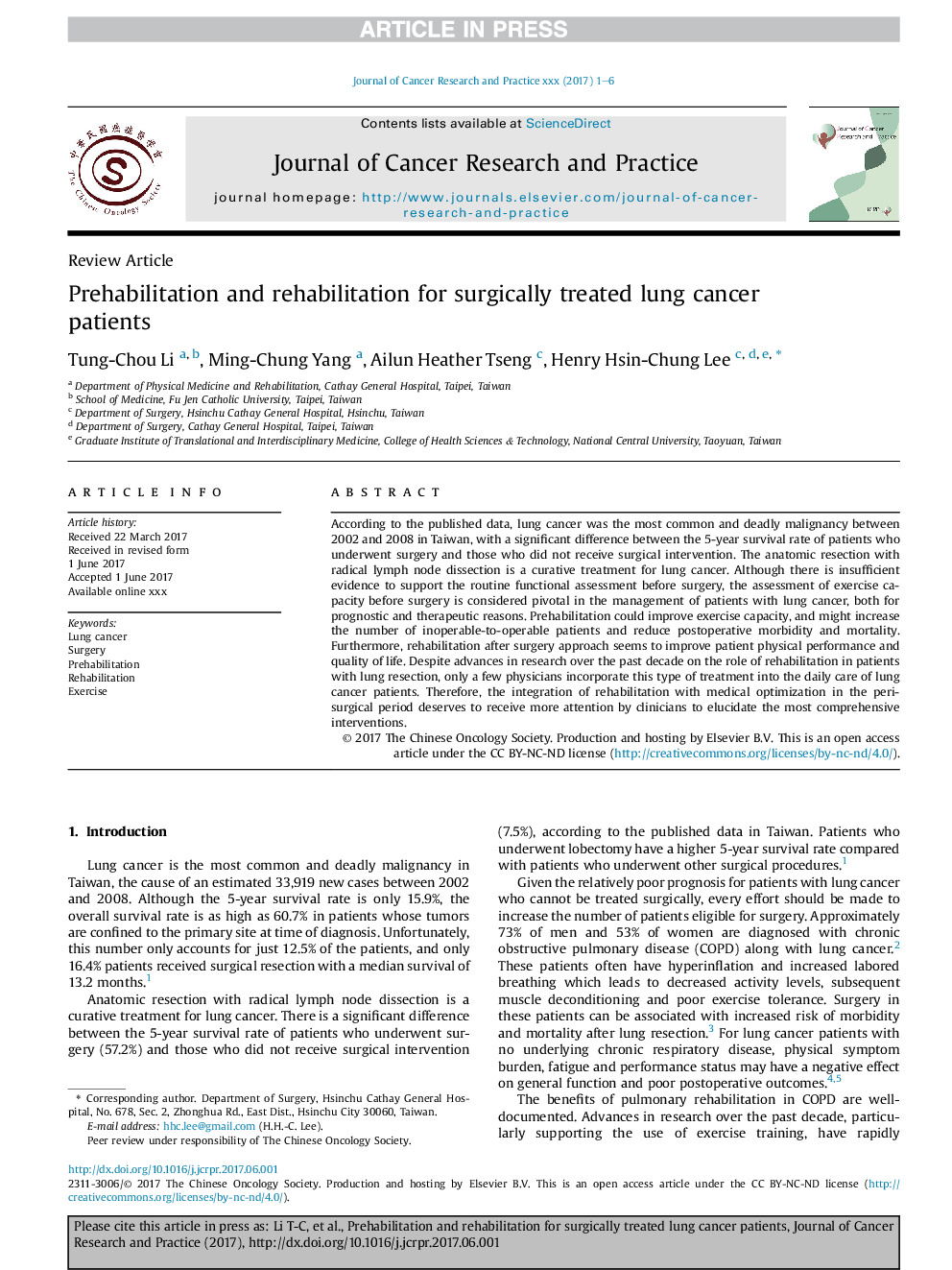| Article ID | Journal | Published Year | Pages | File Type |
|---|---|---|---|---|
| 8787404 | Journal of Cancer Research and Practice | 2017 | 6 Pages |
Abstract
According to the published data, lung cancer was the most common and deadly malignancy between 2002 and 2008 in Taiwan, with a significant difference between the 5-year survival rate of patients who underwent surgery and those who did not receive surgical intervention. The anatomic resection with radical lymph node dissection is a curative treatment for lung cancer. Although there is insufficient evidence to support the routine functional assessment before surgery, the assessment of exercise capacity before surgery is considered pivotal in the management of patients with lung cancer, both for prognostic and therapeutic reasons. Prehabilitation could improve exercise capacity, and might increase the number of inoperable-to-operable patients and reduce postoperative morbidity and mortality. Furthermore, rehabilitation after surgery approach seems to improve patient physical performance and quality of life. Despite advances in research over the past decade on the role of rehabilitation in patients with lung resection, only a few physicians incorporate this type of treatment into the daily care of lung cancer patients. Therefore, the integration of rehabilitation with medical optimization in the peri-surgical period deserves to receive more attention by clinicians to elucidate the most comprehensive interventions.
Related Topics
Health Sciences
Medicine and Dentistry
Oncology
Authors
Tung-Chou Li, Ming-Chung Yang, Ailun Heather Tseng, Henry Hsin-Chung Lee,
